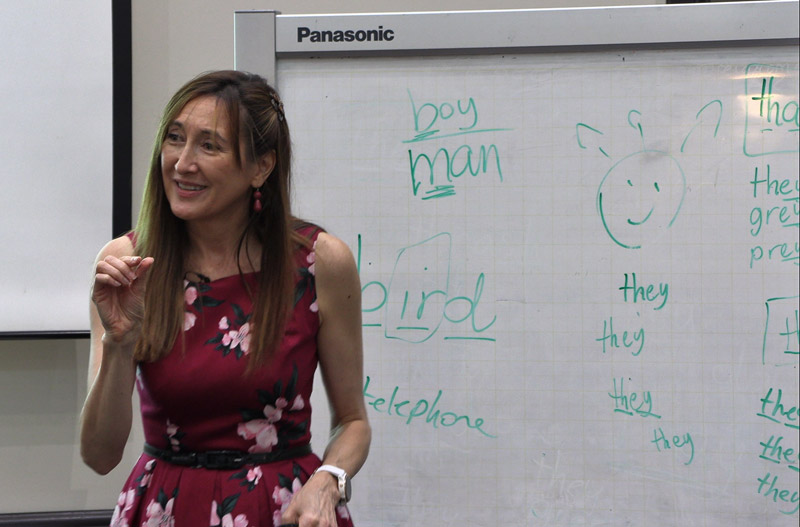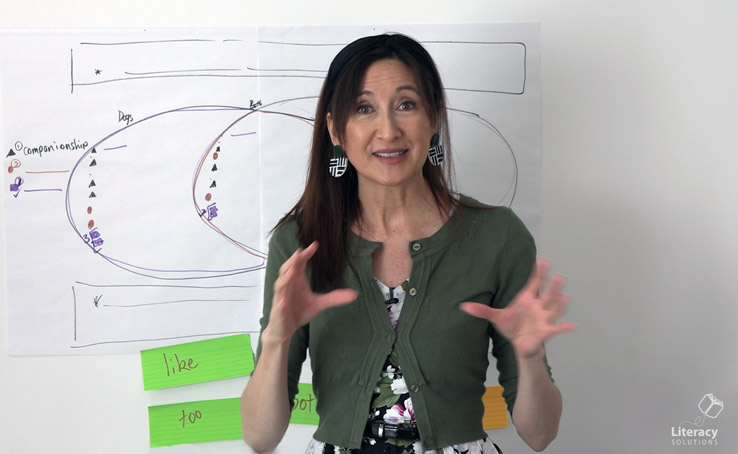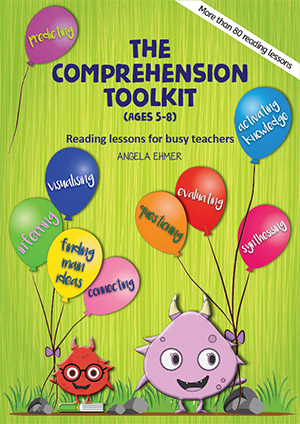Reading Stamina
A limiting factor in the development of reading skills in students and an impediment to classroom management for teachers is the ability of children to read independently for significant periods of time. A valuable strategy to deal with both issues is increasing reading stamina.
Building reading stamina supports students to read for an extended time, trains muscle memory and supports an increased attention.
Teaching a procedure for independent reading enables students to read without direct supervision, enabling the teacher to work with a group (teach), or work with a student (teach, monitor or assess). Roles and responsibilities of the teacher and students can be clearly outlined for students on a T-Chart.
Both the student and teacher have responsibilities in the process. Students:
- Collect enough books
- Sit … (at my desk/on my own/etc.)
- Start reading right away
- Read the whole time
- Think about what I’m reading
Teacher responsibilities include:
- Teaching
- Monitoring
- Assessing
That is, working with a student or working with a group.
How to build reading stamina
- Set a purpose for the reading. Explain how practice reading helps us to become better readers. Support students to make a chart which may contain some or all of the following prompts for improving reading:
- My phrasing and fluency supports meaning making and sounds like talking.
- I use the punctuation to regulate reading phrasing and fluency.
- I adapt the pitch, tone, stress and volume of my voice to match meaning.
- I problem solve quickly and efficiently.
- I self-correct if needed.
- I think about meaning.
- Teach for a procedure (above) which outlines student and teacher responsibilities.
- Start with a manageable time for all students (i.e. a time which can be achieved by all students).
- Instruct students to follow the procedure for independent reading for the designated time. Monitor.
- Gather students together. Invite discussion (paired/group/class) about the reading. Provide feedback on the application of the procedure. Troubleshoot where needed.
- Gradually extend the reading time and continue to monitor.
- Continue to share, provide feedback and troubleshoot as reading time continues to increase and reading stamina grows. Begin to gradually withdraw perceived supervision to build independence.
- When students are able to sustain the reading for the desired time, begin taking guided reading or guided reading/reciprocal teaching. Independent reading then provides another option for supporting independent learning.
Immediate benefits for students and teachers
Feedback from a teacher at one of our recent workshops demonstrates the quick and valuable gains that can be made using this strategy.
Hi Angela
I attended your Toowoomba session last Thursday (26 April) and yesterday tried stamina reading with my 2/3 class. I did as you suggested and discussed the importance of reading and used that verse about the more you read the better you get etc, talked about what good readers do and then did the T chart ‘my job your job’. I allowed them to choose 2 books – their home reader and a guided reader from their box.
When I asked the children how long they thought that they could do it for 1 child said half an hour (and he probably could have) and some others said 10 or 15 minutes. They were really confident about being able to do it. We settled on 5 minutes to start with.
It was lovely to see every head down reading for the whole time. We shared something we read with a partner at the end. After complimenting the class on their great reading with stamina I asked them if they had enjoyed it and all said they had because it was so easy to concentrate on their reading.
Thank you for this great idea for making the most of independent reading time.
Regards Donna (Donna Gray, Highfields State School, 3rd May)
Fact sheet and workshops
The Reading Stamina Fact Sheet can be downloaded and used as a guide to the implementation of Reading Stamina in the classroom. A more in-depth examination and discussion of this topic is a component of the following professional development workshops.
- Reading Stamina (online short course)
- P-3 Reading in the Australian Curriculum
- Prep Reading & Writing
Have you implemented reading stamina in your classroom / school? What was the impact? We’d love to hear your comments!





This strategy looks exciting as it would be easy to implement and would provide students with the necessary self monitoring requirements to enhance their independent reading skills.
Angela,
This is my third year using reading stamina. I have always found reading groups to be challenging but since attending on of your PD sessions I have not looked back. The children in my year 2 class love reading stamina time.
Thank you,
Pamela
Hi Angela
I attended one of your workshops a couple of year ago, where you discussed reading stamina. Since then, every class in the block I work in has been using it and finding it wonderfully successful. Initially the students (year 2/3) were only able to sustain the appropriate reading behaviours for one or two minutes, but before long, they had worked up to 20 minute sessions. The most exciting part is how enthusiastic the students are to improve their reading and the length of time the group can sustain their session for. Thank you!
Amanda
I have used Read to Self time with my Year 1’s for a few years now and find they build their stamina time quite quickly. I use a timer from the start and we chart our best time each week. Once we achieve the time I set as a goal (not verbally to the children) then I can take children aside for reading groups or one-on-one. The children have to take enough books to keep them going the whole time as the rules say you have to stay in one place. I would love to have a separate book box for each child, to cut down on our book selection time, but I haven’t sourced a cheap enough resource for this yet.
I have also used the same approach to writing -Work on Writing Time- and found it so successful for altering the mindset of those kids who quickly write 3 sentences and say “I’m finished”. With Work on Writing time there is no such thing as ‘finished’ because it is still writing time. We had to talk about choices like re-read and edit, give more information, or start another writing task. But I started to notice a great difference in their writing when the goal was time spent writing rather than quantity.
Hi Angela.
Since I attended one of your PDs last year, I have encouraged Reading-Stamina in my classes. My classes consist of Year 8 and 9 students who all have learning difficulties. The students have progressed from the intial 5 minute goal to the current 20 minutes. While the students are reading, I am walking around and listening to each student read one page. Most are more than happy to do this.
After reading your item, I had forgotten that I should also encourage some discussion afterwards to show they are reading for meaning. It may also encourage others to read another book once they hear about the content.
Reading is a nice time in our class. I play some relaxation music, turn the fan up, and we all dive into our books.
Thanks for your support.
Nique Wood
Aspley State High School
Angela, after attending number of your PD sessions, I was motivated to help the students in my class to build reading stamina. We called these sessions Reading Alone time (as you suggested). I have used these strategies with Year 1 and Year 2 students. I found the explicit guidelines and charts you provided to be extremely helpful, as the students were very certain about the expectations and the reasons for having Reading Alone time. They were very aware of how Reading Alone time would help them to become better readers. We celebrated the small successes (eg. increasing the amount of time we were able to read alone for each day) and positively discussed any difficulties that arose. The students were very supportive of one another during this process. I loved the way you gave so many examples on how to do this, at your PD session. The children really identified with the positive language. I would strongly recommend Reading Alone time and the strategies Angela suggest to any literacy teacher. It really helped my students, and was such a lovely, positive time for them and for me. I saw kids becoming very engaged with the reading process, and reluctant readers come to feel very successful. Thanks again Angela for more effective, practical advice and strategies for helping students to become better readers.
Dear Angela,
Attending your PD sessions has been invaluable for me with supporting class teachers working with reading stamina.
The explicit scaffolding of the steps needed to implement RS contribute to the success of the procedure.
Independent reading, the time for students to apply their strategies, is a vital stage in the student’s development as a reader. Also there is such a higher level of engagement and motivation when students can self-select and with teacher guidance choose appropriate “just right” texts.
An interesting comment from some yr 6 students that had developed reading stamina skills, is that they noticed they could concentrate longer in other subjects, even their math tests!